The adage “there is always room for improvement” is sometimes overlooked in the world of technology. Companies that do not improve or evolve their products while resting on past accomplishments usually stagnate and eventually fail.
Recently I reviewed a Bluetooth headset from SoundID, which had all the makings of a near perfect Bluetooth solution. Unfortunately the outgoing sound quality was poor in relation to its competitors.
Sound ID went back into their lab and fixed this issue and added some new features to their soon to be released Sound ID 400 Bluetooth headset. Today’s review will be looking at this product, as they were kind enough to provide technogog with a preview sample.
Besides the Sound ID 400, the company will also be unveiling a separate add-on accessory called the Sound ID Remote Microphone, which is a clip on device that pairs with the headset.
Some of the new features found in the Sound ID 400 include Multi-Point Technology which allows the headset to connect with two devices at the same time, Environmental Mode which enables the user to hear equally out of both ears between calls and Automatic Volume Control.
For this review Sound ID provided the Sound ID 400 headset, the Sound ID Remote Microphone, USB charger, USB cable, and three additional ear loops. Since this is a pre-release sample there is no packaging to describe. According to my contact at Sound ID the packaging will look pretty similar to other Sound ID products. The Sound ID Remote Microphone will be sold separately from the Sound ID 400.
Upon initial inspection the Sound ID 400 looks almost exactly like its predecessor the Sound ID 300; the form factor is identical between the two headsets. The button and layout between the new and old headset is identical. The main external difference is the Sound ID 400 has a matte black rubber outer covering. This is opposed to the black piano finish of the Sound ID 300 which I found became scratched rather easily; especially after a couple of encounters with coins or keys in my pockets. This new finish is just one of the improvements found in the Sound ID 400.
The Sound ID 400 weighs 8 g and measures 53.5 x 15.5 x 7.5 mm. According to the website the battery has a seven hour talk time and up to 200 hours of standby time. It uses Bluetooth version 2.1 and is compatible with earlier Bluetooth versions.
Examining the Sound ID 400 headset we see a status light on the outer portion of the device with a volume/personal sound program button on one side. At the back end of the device is the main button and towards the front is the microphone. Turning the headset over we find the real comfort ear loop and at the opposite end of micro-USB charging socket.
The USB cable has a micro-USB connection on one side and the standard USB connection at the other. Plugging the standard USB connection end into the AC adapter allows the headset to be charged from an outlet. Sound ID provides additional ear loops to accommodate smaller and larger ear canal openings. The medium ear loop comes preinstalled on the Sound ID 400. There is also an over the ear style, which can be used with a foam cushion if so, desired.
The Sound ID Remote Microphone has the piano black finish of the older Sound ID 300 and has the same main button, status indicator light as the headset. On the opposite side there is a clip instead of an ear-piece. Charging is performed via the micro-USB connector.
Specifications:
The Sound ID 400 – Boosts your listening power
AUDIBLE ENHANCEMENTS: With many innovative sound capabilities, the 400 delivers tools found only on Sound ID products.
PersonalSound – You can choose from the Sound ID 400’s 3 listening modes, which are tuned to the most common hearing preferences, to further enhance speech clarity without raising the volume.
NoiseNavigation – The 400 uses multiple microphones and special DSP algorithms to remove background noise and elevate speech.
Environmental Mode – When activated, Environmental Mode provides a “hear-through” feature that enables users to hear equally out of both ears between calls, even when wearing the headset. Making ordinary hearing…extraordinary hearing.
TRUE COMFORT, COOL TOOLS: Scientifically designed for optimal comfort and sound, the 400 excels in fit and its functionality.
“Eargonomic” – The Sound ID 400 is ergonomically designed for comfort thanks to RealComfort EarLoops. The EarLoops, designed for extended wear, better channel sound into the ear for enhanced listening.
Multi-Point Technology – Pair and connect the 400 with your work phone and personal phone – with multi-point technology, you can securely connect up to two devices at the same time. Then a call to either phone can be answered with the headset.
Automatic Volume Control – This feature reduces the need for you to switch volume settings, as the headset seamlessly adjusts to your changing environments and variable noise situations such as driving.
Sound ID 400 Specifications
Lightweight: 8 grams (0.28 ounces)
Dimensions: 53.5 x 15.5 x 7.5 millimeters (2.1 x 0.6 x 0.3 inches)
Powerful Battery Life: Up to 7 hours talk time, 200 hours (8 days) standby
Technology: Bluetooth version 2.1+ EDR and eSCO improves sound quality transmission; compatible with earlier Bluetooth versions
The Sound ID 400 requires an initial charge of four hours with subsequent charges taking up to 2.5 hours for a full charge. Once the light on the headset turns green then charging is complete. Charging can be done off a computer USB port or from the AC adapter.
The Sound ID 400 fits in either the right or left ear. Simply rotate the ear loop 30° to change it from the right (default) position to the left. If you prefer you could use the over the ear style. Aligning the headset is important to get the best sound quality; Sound ID recommends placing the ear loop in the bowl of one’s ear with the nose toward the ground and then twisting it a quarter turn so the nose of the device is directed toward the user’s mouth.
Pressing the main button for three seconds turns on the headset. Powering the Sound ID 400 for the first time places the device into pairing mode. Pairing completes once the cell phone discovers the Sound ID 400 and the standard pin code 0000 is entered into the phone. When the headset is on the status light will flash green and red when shutting down. In pairing mode the red and green lights will alternatively flash.
Pressing the Volume/Personal Sound Program button on the edge of the headset controls the volume on the Sound ID 400.
The volume advances by one step with each short press of this button either during a phone call or in standby. A long button press of this button during a phone call will cycle the Sound ID through its four Personal Sound settings – normal, moderate, strong and off. Personal Sound is one of the enhancements from Sound ID designed to improve the speech clarity without raising the volume.
A long press of this same button while in standby activates/deactivates the Environmental Mode which allows the user to hear equally from both ears. Environmental mode makes the Sound ID 400 function similar to a hearing aid; amplifying the external environment through the headset’s microphone. The drawback to this is you tend to hear your own voice and breathing as well.
To pick a phone call press the main button on the Sound ID 400 or answer via the cell phone. Pressing this same button again will end the phone call. Tapping this button twice quickly will redial the last number called. When paired with a cell phone the Sound ID 400 will automatically transfer audio to the headset.
Setting up the Sound ID 400 was simple and my iPhone detected it right away; although it was identified as the Sound ID 300 on my phone’s Bluetooth setup screen. I assume this is due to the fact that this is a pre-release model.
Like its predecessor I found the Sound ID 400 to be the most comfortable Bluetooth headset that I have worn. It is lightweight is barely noticeable when worn. The ear loops sit on the outside of the ear canal and are kept in place by the shape of the external ear. Wearing the Sound ID 400 for several hours straight was not an issue. The only problem with the ear loop occurs when chewing food or gum, as the headset tends to move down with multiple chews.
The appearance is minimalistic with one status light that does not blink incessantly when the device is powered. Buttons are easily accessible and respond quickly when pressed. The rubberized exterior protects the headset from scratches.
Battery life is particularly good as one single charge lasts for around a week in standby with moderate daily use. The micro-USB charger is becoming more common as devices becoming smaller. It can be easily charged off a computer or outlet.
As I mentioned at the beginning of this review, my main issue with the Sound ID 300 was the outgoing sound was rather poor. Well this is no longer an issue as the Sound ID 400 sounds terrific on both ends of the conversation. Automatic Volume Control works as advertised as I do not recall a time where I needed to adjust the volume of a conversation via the Bluetooth headset.
vEnvironmental mode is a new feature that some may find beneficial. Turning it on mimicked having two open ears as opposed to having a headset blocking one auditory canal. Since it functions as a bypass I would assume that this mode would drain the battery faster as it keeps the microphone on all the time. I found hearing my own voice echoing in my ear to be slightly distracting and I tended to keep this setting turned off. That being said, others may find it useful.
The add-on peripheral the Sound ID Remote Microphone seems more like a novelty. It allows the user’s hearing range to be extended up to thirty feet. The advertise it as something that “can be worn by passengers, children in child seats, conference room situations, or used as a TV listener.” However this is a one-way system meaning if you are in a loud environment the other person is at a hearing disadvantage. It seems like it would be helpful for eavesdropping if that was the user’s intent. For those with hearing issues I can see the utility but for me personally I could do without it.
Conclusion:
When I reviewed the Sound ID 300 I was hoping it would be a “Jawbone killer”. Well Sound ID went and tweaked the problem areas and added some additional features to create one of the best Bluetooth headsets on the market. The sound issues that I found in the Sound ID 400’s predecessor are now gone. The audio quality on both ends of a conversation is now sharp, clear and static free. Sound ID has designed a minimalistic, sleek and functional Bluetooth headset. The user will not feel weighted down using this headset. Even with long durations of wear the Sound ID 400 remains comfortable.
The add-on Sound ID Remote Microphone is a unique option to use in conjunction with the Sound ID 400 and may offer some utility to the hearing impaired but it is not a mandatory peripheral to own. It would be nice as an included accessory with the headset but as a separate purchase I don’t see the need for it.
If you are looking for the next great Bluetooth headset then the Sound ID 400 is the one to get. I know I will be using it as my everyday headset for quite some time.
Pros:
+Superb sound quality (incoming and outgoing)
+Excellent Battery Life
+Dual phone connection capability
+Comfortable to wear even for long intervals
Cons:
-Price
| Grades: | |
| Overall |  |
| Design |  |
| Performance |  |

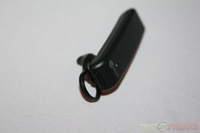
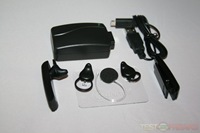
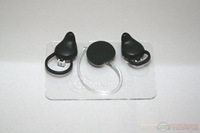
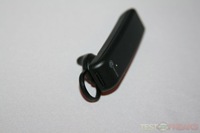
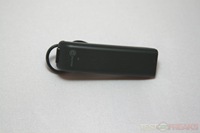
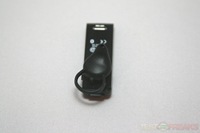
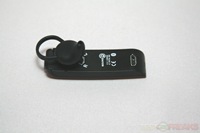
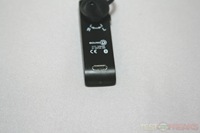
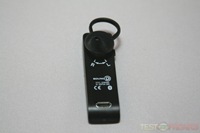
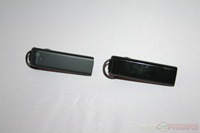
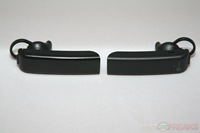
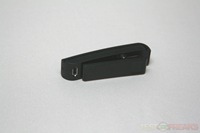
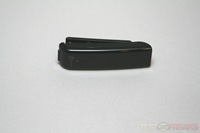
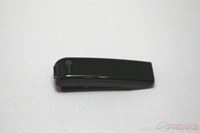
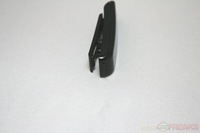





2 comments for “Sound ID 400 Bluetooth Headset”